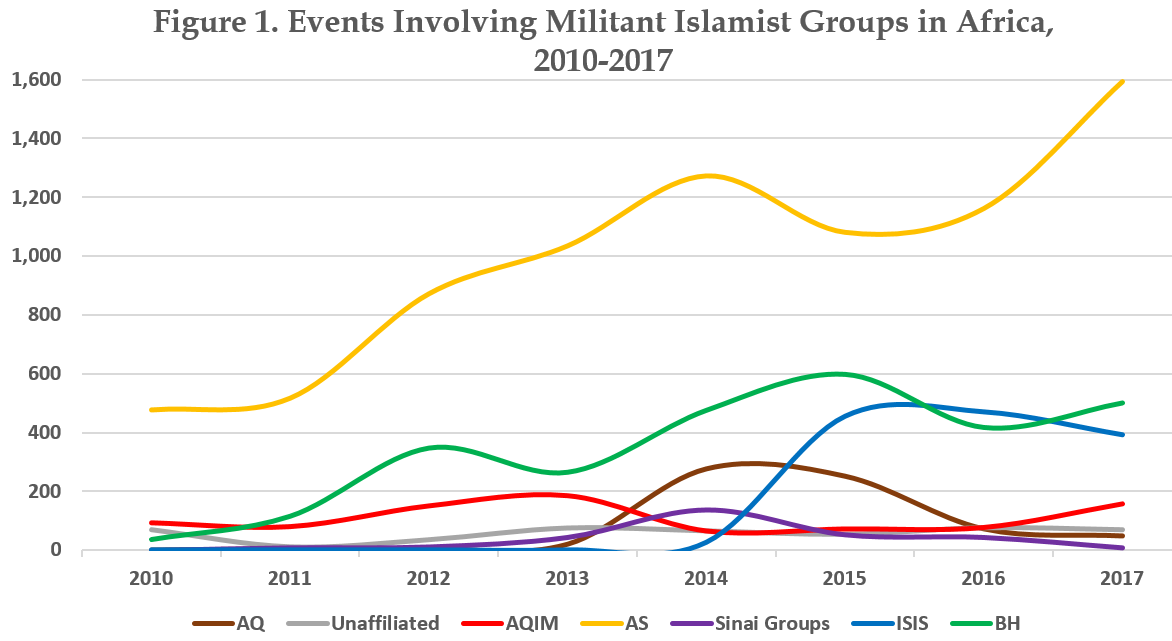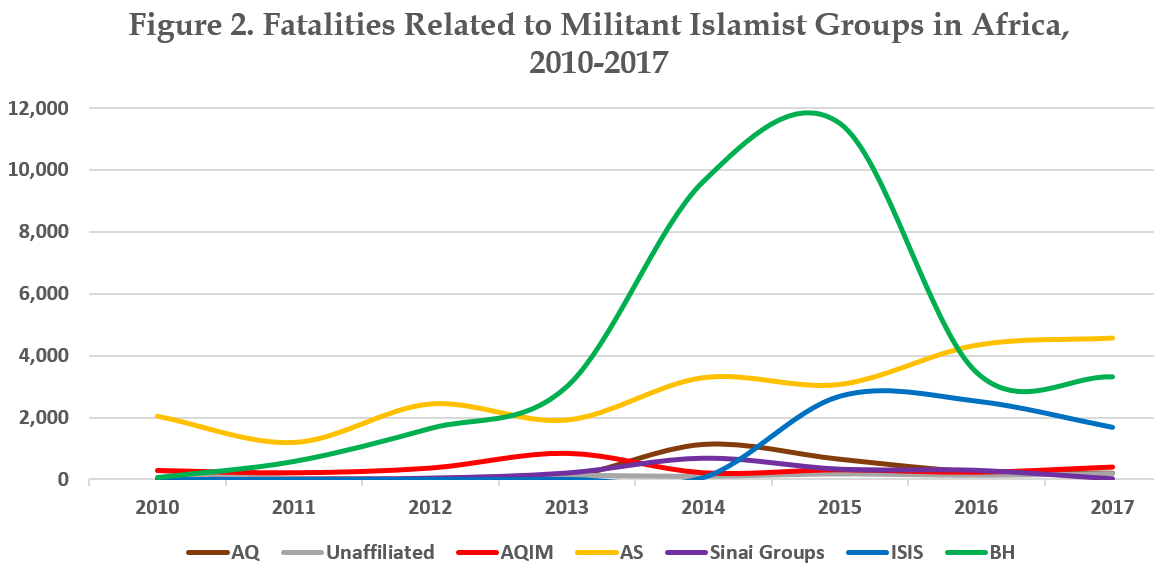Highlights
A time-lapse review of violent episodes involving militant Islamist groups in African since 2010 provides insights into the evolution of these actors over the course of this decade. Key highlights include:
 There has been a steady increase in militant Islamist group activity in Africa since 2010. Over the course of the past 8 years, this translates to a 310-percent increase in violent events (from 675 in 2010 to 2,769 in 2017). (As these episodes include attacks initiated by security forces, this figure also captures the growing military responses to militant Islamist activity over the 8-year period.)
There has been a steady increase in militant Islamist group activity in Africa since 2010. Over the course of the past 8 years, this translates to a 310-percent increase in violent events (from 675 in 2010 to 2,769 in 2017). (As these episodes include attacks initiated by security forces, this figure also captures the growing military responses to militant Islamist activity over the 8-year period.)- Violent episodes involving al Shabaab have comprised between 40 and 70 percent of all militant Islamist group activity in Africa since 2010 (see Figure 1).
- The number of reported fatalities linked to militant Islamist groups has increased 288 percent (from 2,674 in 2010 to 10,376 in 2017). This was punctuated by a spike in fatalities associated with Boko Haram in 2014-15 (see Figure 2). The number of total fatalities has dropped by almost half since 2015. This decline is almost entirely due to the decline in deaths associated with Boko Haram.
 The number of African countries experiencing sustained militant Islamist group activity has grown to 12 (Algeria, Burkina Faso, Cameroon, Chad, Egypt, Kenya, Libya, Mali, Niger, Nigeria, Somalia, and Tunisia). In 2010, there were just five (Algeria, Mali, Niger, Nigeria, and Somalia).
The number of African countries experiencing sustained militant Islamist group activity has grown to 12 (Algeria, Burkina Faso, Cameroon, Chad, Egypt, Kenya, Libya, Mali, Niger, Nigeria, Somalia, and Tunisia). In 2010, there were just five (Algeria, Mali, Niger, Nigeria, and Somalia).- The number of active groups has also grown steadily. In 2010, there were five recognized militant Islamist groups operating on the continent: al Qaeda (in Egypt and Libya), al Qaeda in the Islamic Maghreb (AQIM), al Shabaab, Hizbul Islam, and Boko Haram. By end of 2017, the number was over 20.
- There has been a shift in the face of Islamist militancy in Africa over the 8-year time frame. In 2010, it was largely dominated by AQIM and al Shabaab. Now it is shared with Boko Haram and the Islamic State (ISIS).
- Despite the fragmentation in the number of groups, militant Islamist activity has been focused in five main regions: Mali, the Lake Chad Basin, Somalia, the Maghreb, and the Sinai Peninsula. The increase in activity since 2010 has resulted in a more dense geographic concentration of attacks in the three sub-Saharan theaters. Meanwhile, in North Africa, the locus of militant activity has shifted from the Maghreb to the Sinai.
More on: Countering Violent Extremism Al Shabaab AMISOM AQIM Boko Haram Islamic State

